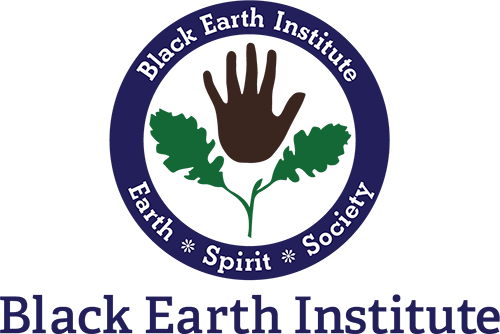
Photo credits, clockwise from upper left: Kristine Wook, Cristina Eisenberg, Nathen Domlo, wusa9.com
By Pam Uschuk
***Adapted from the poem, “Wildfire During Lockdown,” written and recorded for ARTIVISM4EARTH, a collaborative festival at University of Utah bringing together musicians, dancers, visual artists, writers, doctors and scientists to address Climate Change. ARTIVISM4EARTH will air on Earth Day, April 21, 2021.***
Nearly a year into the pandemic, 525,000 dead, more than the population of Tucson. More dead than in three wars.
Since last year at this time, we’ve had two or three days of rain. Even the cactus are pinched in on themselves. A dry wind blows through the yard. Dust blows down streets like snow. All over Tucson, Arizona pines and eucalyptus are dying. Song birds disappear.
My dog and I hike the arroyo cutting through our neighborhood. There is no destination but discovery. At fourteen she paces me, sniffs local news. No birds, but we come upon a small but healthy saguaro forest. And, at the heart of a saguaro family, the biggest barrel cactus I’ve ever seen, perfectly green, sheltered from pollution and disease. On the upslope, her thorny head reaches my shoulder.
We navigate the dry sand stream, come upon artifacts—random electrical wire, a broken bench, rusted traffic signs from the time before aluminum, plastic pottery shards from Home Depot, an empty cactus wren’s nest woven in teddy bear cholla, their thorns spiked like trebble hooks to anchor in enemy flesh, built to protect eggs. No wren in sight, but a few mourning doves moan from electric lines strung like cat’s cradle all over town.
We walk til we come to someone’s idea of fun—a homemade golf course. suburban country club smack in the arroyo’s course—flags tatter above raked sand greens, cups dug next to Colorado River toads who’ll emerge to sing and mate if there is a next flash flood.
Above us a commercial jet roars, its chem trail raining invisible on our heads.
Nights coyotes hunt desert hares between golf flags. Nine-stripe gophers dig their own holes in one.
******
Congressmen grill Representative Deb Haaland about her association with Earth. It’s alive, she says. From Laguna Pueblo, she holds as calm as turquoise in the eye of angry suited men. A threat to big oil and gas, she calls for protection of air, of water, of sacred lands. She says she won’t allow drilling on Federal land. Imagine a Secretary of the Interior who believes earth and its beings come before profit of any kind.
******
Now, there are more mutant variants than the original virus, an invasion as overwhelming as white settlements on Indian lands. Super-viruses teem on our fingertips. Will we leap from pandemic to pandemic, nature’s population control?
Twice as many Indians die of Covid than Whites. My Navajo friend writes that the funerals never end. His wife, a PA at Tuba City Hospital, works the intake tent. She holds the hands of the dying, last week an elder couple who died next to one another on cots, desert wind whipping tent flaps to slap wild drumbeats as their spirits left this world.
We want to be whole, hold a loved one’s hand as he or she leaves this world. We want to believe in a way to alleviate suffering. We want touch, a hug. To see children play unmasked in the park. To speak around a table in a class, laughing and learning the names of constellations and their luminous lives. To hear a grandmother tell why there are clouds, how a girl tamed a gila monster or knitted her brother swan wings.
We want to kiss a friend’s face. To kiss.
******
This is the story of the glamorous West. The pioneer legacy. White privilege. No resources left unturned. No Indigenous culture left unburned. Or free. The Western expansion of greed. Indian lands seized. Rivers drained by fracking wells spidering under soil where crops grow, by mines opening shafts a mile down, by dams, by the spread of geneticaly modified seeds, by the cancer of more square footage, and the proliferation of our species until there is no place to be alone in the wild, our species spilling over with its insatiable hunger for things, things, things, our species its own disease, killing millions of animals, plants, vast expanses of forests, deserts, prairies, oceans and building on every square inch until open land is rarer than platinum, until clean water and air are nothing but ancient dreams.
******
February and a few Cedar waxwings and warblers fly through a month early on their way north. I put out more water, though they do not show up. A few white-crowned sparrows and house finches at the feeder. Where did the birds go? Traffic explodes. All day, the growl of commercial jets, incoming Air Force fighters, P38 transports scarring sky. Even into night, this bilious roar.
******
Where I planted a tangle of Peruvian butterfly bush, bottle brush, fairy duster, star jasmine, and purple sage, yellow-headed verdins hang upside down to feed. As I type, Anna’s hummingbirds dive at my head. A painted lady butterfly and honey bees plumb orange trumpet flowers for nectar. On a porch roof beam, a mourning dove reclaims the nest where last year a bull snake swallowed whole her baby. In the bower of desert willow overhanging our gate, thumb-sized goldfinches sweet wheeze, No Hate, No Hate, No Hate.
Singing for rain, I arm myself with shovel and seedlings to plant native trees and native trees and native trees until all I can see around our house is green, green, indelible healing green.

